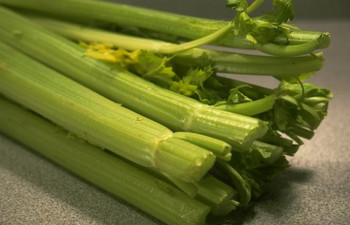How to Grow Celery
Celery might seem like a simple vegetable to learn how to grow it, but you’ll find that celery is easy to start growing, but difficult to maintain. Celery is a water-based vegetable, so it’s easy for celery plants to dry out and die.
Also, planters have to be careful where they plant celery, because too much sunlight will kills celery stalks, while too little light retards the growth.
Celery and Frost
If there is the threat of frost, celery needs to be covered at night. If celery is hit by frost over night, the harvest is ruined. So celery is a high maintenance crop.
Another reason celery is a headache to maintain is it’s “lightness”. Still, learning how to grow celery can be rewarding, due to the dedication that is required. Once you know how to grow celery and foster good gardening habits, you’ll find that tending to celery becomes second nature.
Celery Season
Celery is considered a cool weather crop. The plant takes about 16 weeks to mature, before it’s ready to be picked. Celery prefers compost and moisture-rich soil in order to grow and has a low tolerance for heat, as it prefers cool and cloudy areas. You don’t want to plant celery in an area where it won’t have sufficient cool weather to grow, preferably 3 to 4 months.
Getting Started Growing Celery
Because celery is a cool weather crop, it is best to start growing celery indoors. Otherwise, if you wait until the end of spring, it will be too warm to grow outside. When you start to grow celery indoors, let the plant grow for about 8 to 10 weeks before placing it outside.
Only plant celery outside when the threat of frost overnight goes away. If it’s too hot or cold, the celery plant‘s growth is inhibited. Anything lower than 50 degrees and above 70 degrees is bad for the plant, so you can see the climate has to be just right.
Planting Celery Indoors

How to Grow Celery
When learning about planting celery indoors, you will want as few seeds per pot as possible. The seeds are small enough so that this should not be an issue. Plant up to 10 in the same pot, but no more.
When the seeds start to sprout, remove them from the pot one by one, until you have 1 germinating celery seed per pot. When the celery reaches about 6 inches tall, it is ready to plant outside as long as there are no frost dangers.
Remember to water the celery on a regular basis. Otherwise, the celery stalks become tough and stringy.
Caring for Celery
Once you’re ready plant the celery outside, make sure that it’s planted in a good spot for growing. Too much sunlight without water will dry them out and kill them.
Water your celery crop every day and make sure the plants are in moisture rich soil. When you plant them outside, space the plants about 2 feet apart from each other in rows. It bears repeating that celery needs to be in full sunlight when planted outside, for optimal growth to occur.
Because celery is a heavy feeder, it also needs a great deal of nutrients, such as compost or fertilizer. When you till and weed the soil every day, it is a good idea to till compost into the soil so that the nutrients can be mixed with the moisture and absorbed by the water.
Be careful of the kind of fertilizer you use, because some of the artificial fertilizers can cause the plant harm. If you are going to use fertilizers, try to use organic ones. These fertilizers tend to be a little bit more expensive, but they are far safer and better for the body.
Harvesting Celery
Celery has a long maturity rate for a vegetable and before it matures completely, you will need to tie the stalks together with twine, so they don’t grow improperly or wilt.
Before harvesting, there are also a great deal of insects and diseases that can harm celery such as slugs, aphids, leaf spots and blight. Once celery has reached a height of a foot or more, it is ready to be harvested. When you harvest celery, cut the outer stalks away, because they were the ones most exposed to the elements and the inner stalks will taste better.
You can you use the outer stalks of celery in soups or stews, so if they are undamaged, don’t throw them away too soon. While celery requires a lot of care, the finished vegetable is useful in so many dishes, or as a side dish. Learning how to grow celery means you’ll always have your own supply of fresh celery.
For more instructions on how to grow celery, visit:
